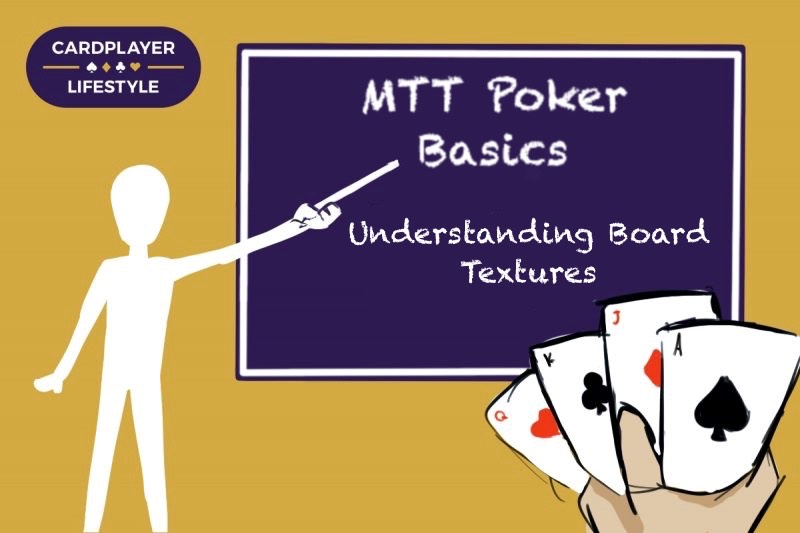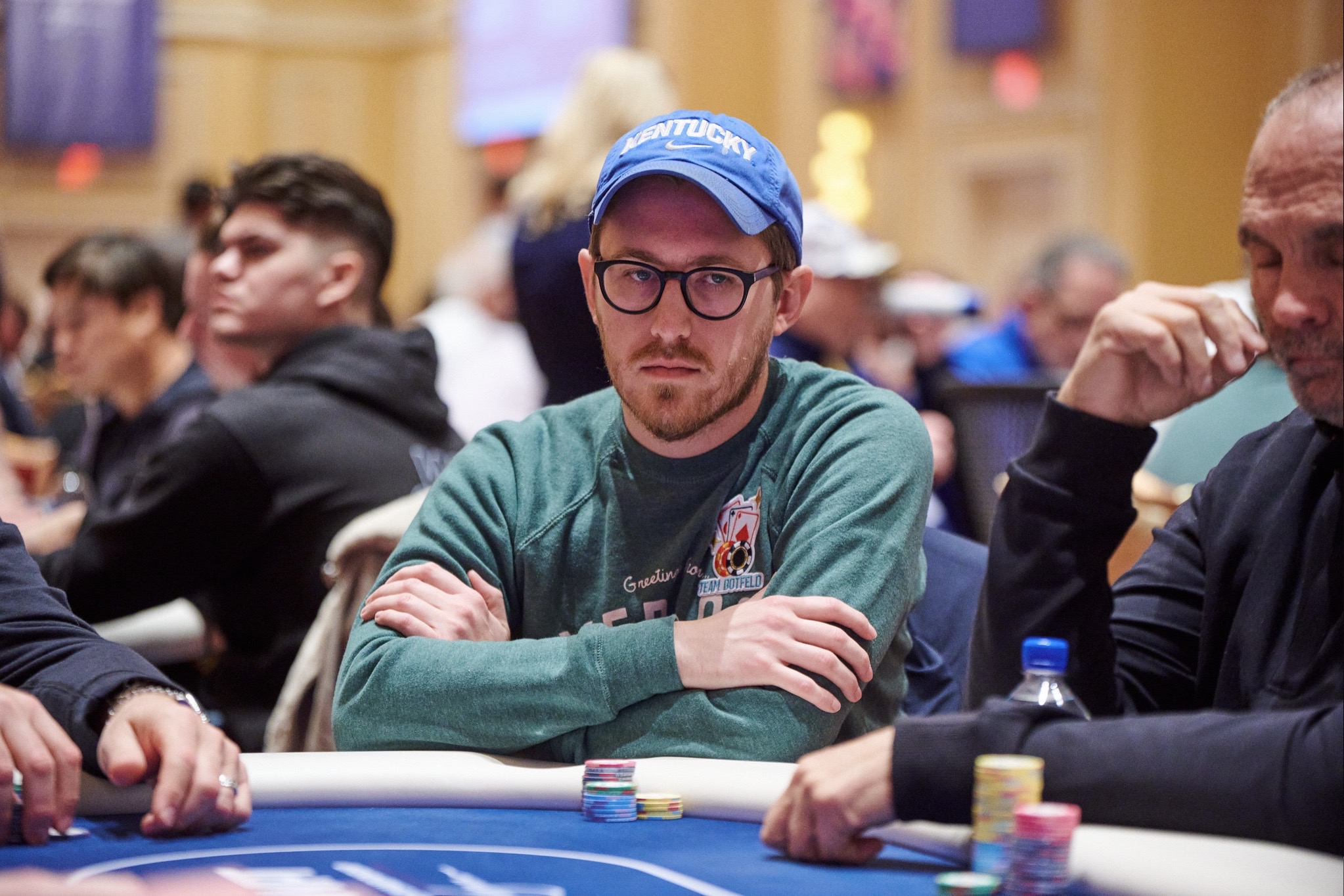Ed. note: This is the seventh in a series of articles designed to help recreational tournament poker players build their hobby into a profitable endeavor.
When I first imagined this series, I knew that learning preflop ranges was imperative to understanding tournament poker basics. Preflop decisions occur every single hand, whether you voluntarily enter the pot or fold, so mastering those decisions could only raise the floor of any player’s poker game. As we progress further into MTT poker basics, there are opportunities to raise the ceiling on your game and become great instead of only adequate.
Just like preflop, playing poker post-flop will offer situations you need to respond accordingly to. In every hand that reaches the flop, you should be noting how many players are in that pot, who has position, what the size of the pot is, and how that pot size relates to the stack you still have yourself. This sounds like a lot to juggle, but these things come naturally in due time. In order to take your post-flop game to the next level, you should simply focus on recognizing various board textures and understanding the ranges that flop benefits most.

For our purposes here, we will focus on single-raised pots in position vs the Big Blind. In the situations we examine, let’s assume that each player starts the hand with 40 big blinds and we have raised first in from the lowjack position.
Recognizing Different Flops
Every time a hand goes post-flop, there is a flop. The board texture of the flop simply refers to the connectivity of the cards on that flop and how they relate to the ranges involved in the hand.
Since we are opening from the lowjack position in the examples today, we can assume we have a tighter range. We mostly will be opening hands that contain two Broadway cards, stronger suited holdings, and pocket pairs. Our opponent needs to defend a wide range to profitably defend their big blind. They should be defending most two gapper offsuit hands and nearly any suited hand. If an ante is in play, they have to defend even wider. With this information, we should be able to look at various flops and apply pressure accordingly.
Let’s focus on three board textures. These flops will be grouped as:
- Ace high, disconnected
- ABB, or an Ace with two Broadway cards
- Low connected, small cards where straight and flush draws are available
Each of these board textures will require a unique response. On Ace high boards that do not offer straight or flush draws, the flop is pretty dry. Knowing that we have a significantly higher percentage of Ax hands opening from the lowjack position, we can safely bet small. Our opponent’s range is so wide that they will have to automatically fold many hands that will crack under pressure on future streets.
On the other hand, an Ace high board followed by two Broadway cards offers a different scenario. You will have a significant nut advantage on these boards. For example, on a board of AJT with a flush draw, you should split between betting roughly 50% or 85% pot when checked to. Your range advantage is so strong in this situation that your opponent will need to fold a majority of their single Jx and Tx hands that cannot significantly improve on future streets. This is a huge win for you in this position so missing these big bets can be costly.
All this said, you can’t bet every flop as the preflop aggressor. Some flops will not connect with your range well, making your betting more infrequent but larger.
Low connected boards that can evolve into straights and flushes are better to be cautious on. Our opponent’s big blind range will often have a piece of something like this. For example, on 865 with a flush draw, our tighter lowjack range should be checking nearly 60% of the time. When we do bet, you will see it is often with strong hands that need protection like JJ and QQ. These pocket pairs are strong but vulnerable on these dynamic boards, so they prefer to bet up to 50% or 85% of the pot when they do bet.
While there are so many more board textures to learn, recognizing these three will go a long way toward improving your post-flop decisions. For more on the various board textures available, I recommend checking out Gareth James’ DTO Poker Coaching session on post-flop play.
Balancing Your Betting Range
Now that you have seen common flops to recognize, it can feel great attacking them confidently and extracting value. But correctly attacking the right boards as a bluff means just as much to your bottom line. If you aren’t bluffing appropriately, your opponents will start to take advantage of you and it will be harder to be paid off when you finally do make your big hand. Let’s revisit these board textures to understand what type of hands are bluffing with range advantage.
On an Ace high board, our tighter range has such an advantage that we virtually never check. But there is some nuance on the bet sizing. On A95 rainbow, you can expect to bet small something like 65-70% of the time. But to protect against the small pocket pairs and weak 5x, we have some large bet bluffs. Suited broadways without premium showdown value start as excellent candidates. Consider hands like KTs and QTs on this board. If we bet pot or more, our opponent suddenly has to fold all pocket pairs below 99 (besides 55, of course). They have to fold their off-suit 9x hands often, as well.
Getting these folds with K or Q high is crucial, but these hands still have equity even when they’re called. With two overs to cards our opponent is most likely to have paired with, we can hit an over and like our hand. For added equity, prioritize betting large when your KTs or QTs hand has a backdoor flush draw as well.
These high card hands without showdown value make for good bluffing candidates on low connected boards as well. Revisiting 865 with a flush draw, you can safely use hands like KTs, QTs, and JTs as bluffing candidates. If you have the suited variety with a backdoor flush draw, then you can attack these boards knowing you also have a backdoor straight draw with your T.
These bluffs demand a formidable hand from your opponent to continue. But should their hand be so strong they decide to check-raise, our hands become easy folds. The backdoor equity is nice, but once we face a check-raise, we know that our equity is likely drawing thin and we can live to fight another day.
Playing the Flop, Not Your Hand
As you can see, range advantage is the name of the game when considering board texture dynamics. The various positions and their relation to the board at play should always impact post-flop decisions.
Once you recognize the various boards, start to ask yourself two questions. Do I have a significant range advantage? If yes, then you should bet. The second question is where things can get interesting. Do I have a significant nut advantage on this board? If so, you can apply an immense amount of pressure on your opponent. Following these steps alone can help you turn up the heat and take down more pots as a result.
Understanding these concepts will help you win without the best of it, which is essential in tournament poker. In the end, it’s all about playing the flop, not your own hand. Take the advantage while your opponents are still only focused on their specific hand. If they aren’t paying attention, attacking the right board textures will make your own hand an afterthought.






